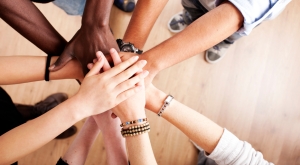Hey folks, welcome back! So I guess in my last blog I should have added a sixth reason for why I’ve decided to start blogging, which is this:
Being a student of Criminology and Anthropology for 5 years during the journey of my H.BA, I have developed a keen passion for social and cultural issues. Majority of my undergrad courses were fuelled with very interesting and sharp subject matters that I believe most people (i.e., the general public and not just sociologists or anthropologists) will be intrigued by. In fact, I strongly believe that people will not only be intrigued but also, they should be made aware of these matters. Therefore, another reason for why I’ve decided to let out my rants to the world is in the pursuit (and little hopes) to educate people on certain topics that are interesting and crucial for collective action. The aim is to take what’s well-informed in the academic realm, and in it’s most basic form, spread it to the public realm so that we can all learn and grow from it; remember Ubuntu Philosophy!
Saying that… let’s dive into the topic of collective efficacy and collective disadvantage!
 Collective efficacy can be best understood as social cohesion, or the bond within a community/neighbourhood, combined with shared values and expectations for social control. In other words, a community or neighbourhood that is unified in their social values, goals, and in the ways they protect their society, portray strong collective efficacy. There is a strong debate that in today’s world, our society is lacking this unity.
Collective efficacy can be best understood as social cohesion, or the bond within a community/neighbourhood, combined with shared values and expectations for social control. In other words, a community or neighbourhood that is unified in their social values, goals, and in the ways they protect their society, portray strong collective efficacy. There is a strong debate that in today’s world, our society is lacking this unity.
Why does this even matter, you ask? Hold that thought as we explore the next concept…
Collective disadvantage is a term that is characterized by various social factors within certain neighbourhoods, such as:
- Poverty
- Long-term unemployment and inequality of employment opportunities due to stratifaction (*basic understanding of stratification: think of ghettos or underdeveloped areas being separate from the rest of the city)
- Lack of opportunity to obtain education, or higher education
- Dysfunctional family dynamics, i.e., the most common being that of single-parent homes
- Inaccessibility to proper healthcare services and agencies
So to put it all together, and to answer the question of why this matters… Neighbourhoods that lack strong collective efficacy are the same neighbourhoods that suffer from collective disadvantage. This matters because lacking communal ties with our neighbours in today’s world, which in turn leads to factors of collective disadvantage, results in the terrible outcome of having higher crime rates in those areas. Communities that show signs of being collectively disadvantaged are fostering a place for crimes to exist and to persist.
One of the most shocking facts that I learned was that collective disadvantage plays a much powerful role in the break-down of society than violence! More powerful in breaking down society than violence … Violence … ? … Supposedly the thing that we fear the most nowadays (i.e., the “War on Crime”) ?!
Let’s take a moment for these facts to settle in.
Are we really losing touch with each other? Is our world so saturated and stratified that it ends up producing crime? Are we pushing the members of our community so far off, where they don’t even have proper access to healthcare, employment, and education, that they have become the backbone and home of society’s criminal activities? Is that really how we’ve evolved as humans…? Has racism, sexism, hatred, and separatism truly divided us? Are we incapable of living in communal solidarity now?
Let’s hope not. Let’s hope we haven’t come that far in our human civilization yet. But the facts remain to be as they are, and they will continue to be so until we (YOU and me) do something about it. Let’s try and change areas that are collectively disadvantaged to being equally advantaged.
Here are some things we can collectively do in an act to go forward with healing our communities, as suggested by few social theorists, and some suggested by me:
- Social institutions, such as schools and families, should communicate the expectations society has of the youth and the values they should pursue. This way, the younger generation will have a stability in their knowledge about their society and they will develop a strong discipline of morality.
- Everyone should get involved more in communal activities. Volunteer with local charities or organizations, clean the streets, go out to neighbourhood events, start your own Neighbourhood Watch Program (click here to do so); just get out of your own home, literally.
- Educate others about the relationship of crime and collective efficacy. Talk to your families and friends. And of course, share this blog 🙂
Thanks for taking the time out to read this! Leave a comment, I’m always open for discussions… and don’t forget to click the Follow button below. Peace & Love ~
